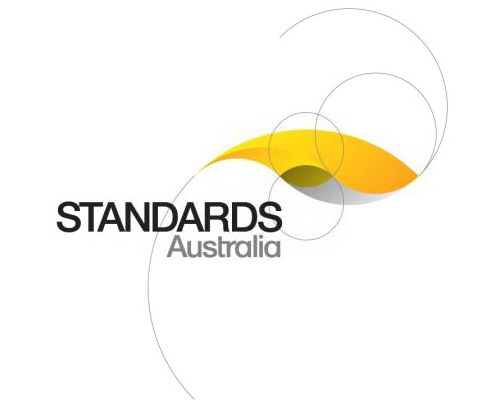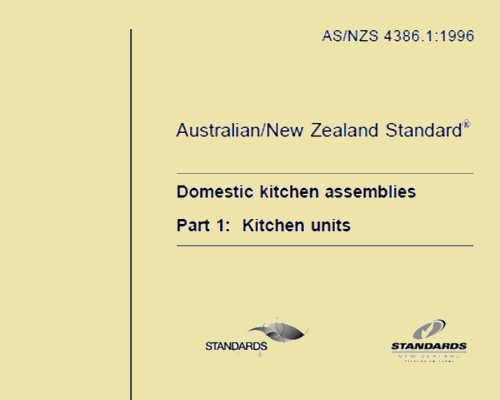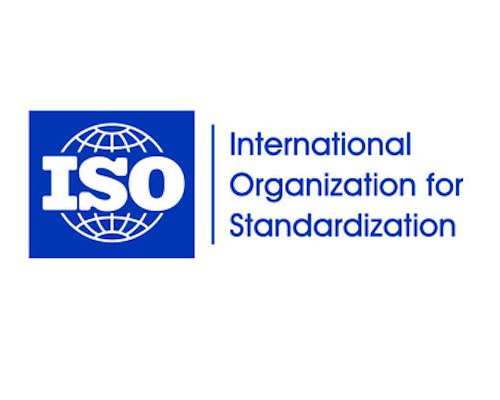Standards and specifications
 Audio for slide 1 (mp3 |6|KB)
Audio for slide 1 (mp3 |6|KB)
When all aspects of an installation meet the standards that apply to the project, it can be considered a 'good quality' job.
Let's look at the main standards and specifications you're likely to come across in your installation work.

 Audio for slide 2 (mp3 |6|KB)
Audio for slide 2 (mp3 |6|KB)
Australian Standards
There are literally thousands of Australian Standards, covering everything from consumer products to building construction to environmental care.
They are developed by a non-government organisation called Standards Australia.
The Standards in themselves are not laws. However, when they are referred to in contracts or building regulations for work to be performed, they become legally binding.

 Audio for slide 3 (mp3 |6|KB)
Audio for slide 3 (mp3 |6|KB)
This means that if a contract with your client or a local council regulation says you must comply with AS/NZS 4386-1996: Domestic kitchen assemblies, then you are required by law to meet the specifications contained in that standard.
The code at the front of the standard is read in the following way:
| AS | abbreviation for Australian Standard (note that AS/NZS means Australian / New Zealand Standard) |
| 4386 | identifying number |
| 1996 | year of issue |

 Audio for slide 4 (mp3 |6|KB)
Audio for slide 4 (mp3 |6|KB)
ISO Standards
ISO Standards are developed by the International Organization for Standardization, based in Switzerland.
ISO is best known in Australia for its Standards on quality management (the ISO 9000 series) and environmental management (the ISO 14000 series).
But as a kitchen and bathroom installer, you may come across ISO Standards relating to kitchen extraction ducts and decorative surfacing materials.

 Audio for slide 5 (mp3 |6|KB)
Audio for slide 5 (mp3 |6|KB)
Building Code of Australia
The Building Code of Australia (BCA) forms part of the National Construction Code, developed by the Australian Building Codes Board.
It sets out the technical requirements for all areas of building, from design through to construction, and has been given the status of building regulation in all states and territories.
There are many references in the BCA to Australian Standards.
Because the BCA is used as the basis of local council building regulations, these Australian Standards become part of the regulation wherever they are referenced.

 Audio for slide 6 (mp3 |6|KB)
Audio for slide 6 (mp3 |6|KB)
Building specifications
On building projects that require council approval, there will be a specification document that accompanies the plans.
This will set out the details for all technical aspects of the work to be undertaken, including materials and installation to be used.
For kitchen and bathroom installers, there will also be a specifications document that relates specifically to their part of the project. This will set out the technical details of the project, including the client's choice of colours and finishes and the model numbers and brand names of all appliances to be installed.

 Audio for slide 7 (mp3 |6|KB)
Audio for slide 7 (mp3 |6|KB)
Other standards and codes
There are various other standards and codes of practice that on-site workers might need to comply with when they're carrying out installations. These include:
- enterprise standards - used by companies to refer to their own internal set of standards they have developed for particular products or installation techniques
- manufacturer's instructions - issued by product manufacturers to advise installers and end-users on how to install and care for the products
- codes of practice - developed by WorkCover, industry bodies and other organisations as 'approved' ways of going about particular types of work.

 Go to Work procedures
Go to Work procedures